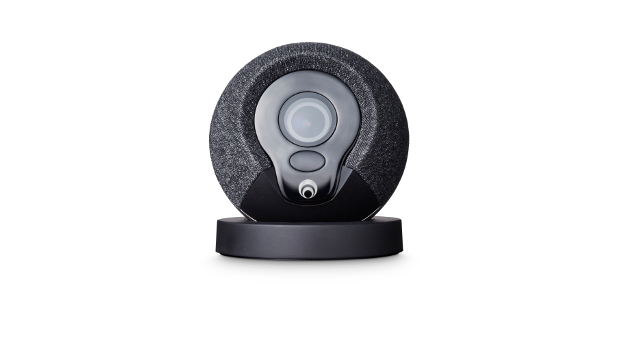With the recent attention, little of it good, focused on the security, or rather lack thereof, of Internet of Things (IoT) devices, one would be forgiven for dismissing a self-install home security system leveraging the technology.
The Mirai-based distributed denial of service (DDoS) attack on the domain name (DNS) service provider Dyn rattled many a seasoned commentator due to the fact that many of the IP devices generating the flood of crippling traffic were devices such as surveillance cameras, digital video recorders and other common, low level devices.
This discovery led to much criticism of the makers of these devices, including the likes of video equipped baby monitors, for their basic lack of security.
It is within this context that Cocoon is offering its IoT-leveraging home security system. Cocoon’s neat devices detect sound waves, which when analysed in networked and coordinated fashion, can determine the difference between your cat roaming about the house, and a burglar attempting to gain entry.
Subsound tech
“Our unique Subsound technology uses sound to cover the whole home and not just the room or floor you place Cocoon,” says the company’s web site. “This means no extra sensors, no wires, and no hassle.”
“One device, no additional sensors,” it promises.
Cocoon says that because sound travels easily through and around the home, the Cocoon system does not require additional sensors.
“Everything Cocoon needs is packed into one device that can detect activity in other rooms, on other floors.”
Cocoon listens for subtle vibrations in the air caused by movement, which it says, act like fingerprints, which over time help it to learn what is normal, and critically, what is not, for your home to decide whether or not to trigger an alert.
IoT nightmare?
But with reliance on networked devices, and external services, what about security of the system itself? Could it be hijacked for the purposes of compromising your home?
Cocoon, unlike many of the IoT device makers, has a deep culture of security.
“The Coccoon founders have all worked in internet security in the past,” said Sanjay Parekh, co-founder and head of commercial, Cocoon. “We have a combined experience of around 50 years in either cloud security, hosting, or software. We’ve worked for companies like Trend Micro and Intel Security and our experience is really the thing that we’ve brought through the whole company.”
“We’ve leveraged our experience of security and cloud infrastructure by really building a product from the ground up with security in mind. Typically, when a new product is built people think about security at the end. We have designed a product from the beginning with security in mind.”
“So Cocoon is committed to security in all aspects,” said Parekh. “We’ve really thought deep and hard about this issue. We started the business because we wanted people to feel secure and safe in their homes. And in order for us to do that we have to build trust. And the way we build trust is by not only securing the physical homes but also securing virtual homes. And the data that passes between the device and the individual.”
Devices
The devices themselves are small, and unobtrusive, just 85mm high, by 75 wide, weighing 175g. They sport a 1080p HD camera, with a 120° horizontal wide-angle lens, automatic night vision and high power IR LEDs.
The unique Subsound Technology uses an infrasound microphone that combines with geo-location and machine learning algorithms to determine what is a security incident and what is a normal domestic occurrence. There is also a microphone and motion detectors. When it is time for an alarm, a high-quality built-in speaker sounds a 90+ dB siren.
Connectivity is via 2.4GHz Wi-Fi (802.11 b/g/n), with WEP, WPA + WPA2 Wireless security.
The devices are controlled via an app for Android and iOS, giving anytime access to real-time information.
Self install
Self-install and set up is key for Cocoon.
“Traditional home security doesn’t work for most people. It’s too expensive, too complicated, and false alarms happen so often that we’ve learnt simply to ignore them,” says Cocoon.
“We believe in making homes safer and simpler. Often the people that need home security the most are the people that don’t have access to it. Whether you’re renting, own your home or travel between homes, everyone should feel safe at home with the minimum of fuss.”
The company was first launched via the crowdfunding site Indiegogo in November 2014, impressively making its campaign target in the first three days. A month later saw strong pre-sales to customers in more than 50 countries, with a round of seed funding from Breed Reply Investments.
The company has from its initial 5 founders to a team of more than 30 based in two sites in the UK, Leeds and London.
Market challenges
Cocoon is well aware of the challenges it faces in offering a home security system that relies on IoT technologies in the current atmosphere.
“The DDoS issues that have been happening recently are actually a real insight into how the Internet of Things is developing,” said Parekh. “So currently what you’ve got is a lot of devices that have been created by people that are specialist in hardware manufacturing but not necessary specialists in software. The problem that we saw recently was around the fact that a lot of these devices could accept incoming connections. There were quite often had passwords and log in details that were generic and they weren’t necessarily updated regularly.”
Parkeh asserts that more traditional developers, as opposed to device manufacturers, are more than capable of implementing the basics of security in the field.
“These three basic principles are things that good software practitioners will always follow when they’re delivering security solutions. So Cocoon doesn’t accept incoming connections. We update our software and device regularly and we certainly don’t have generic passwords and admin rights.”
TechCentral Reporters








Subscribers 0
Fans 0
Followers 0
Followers